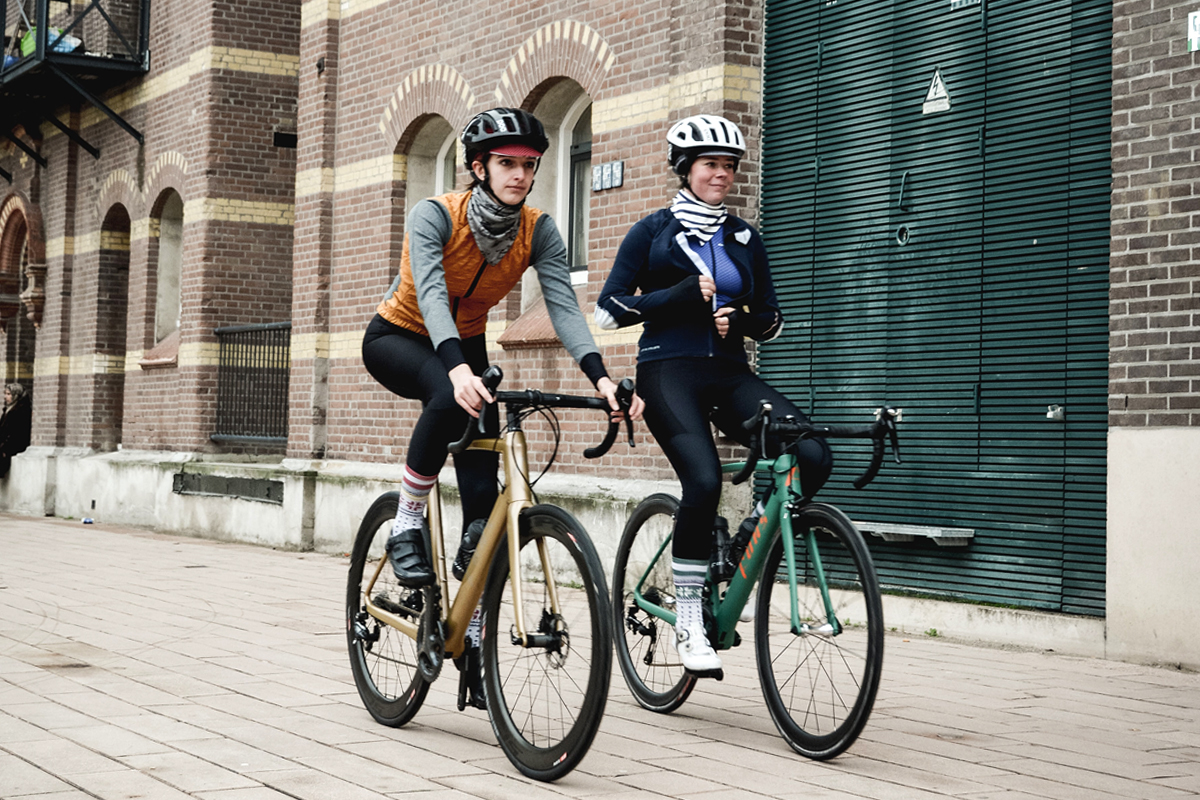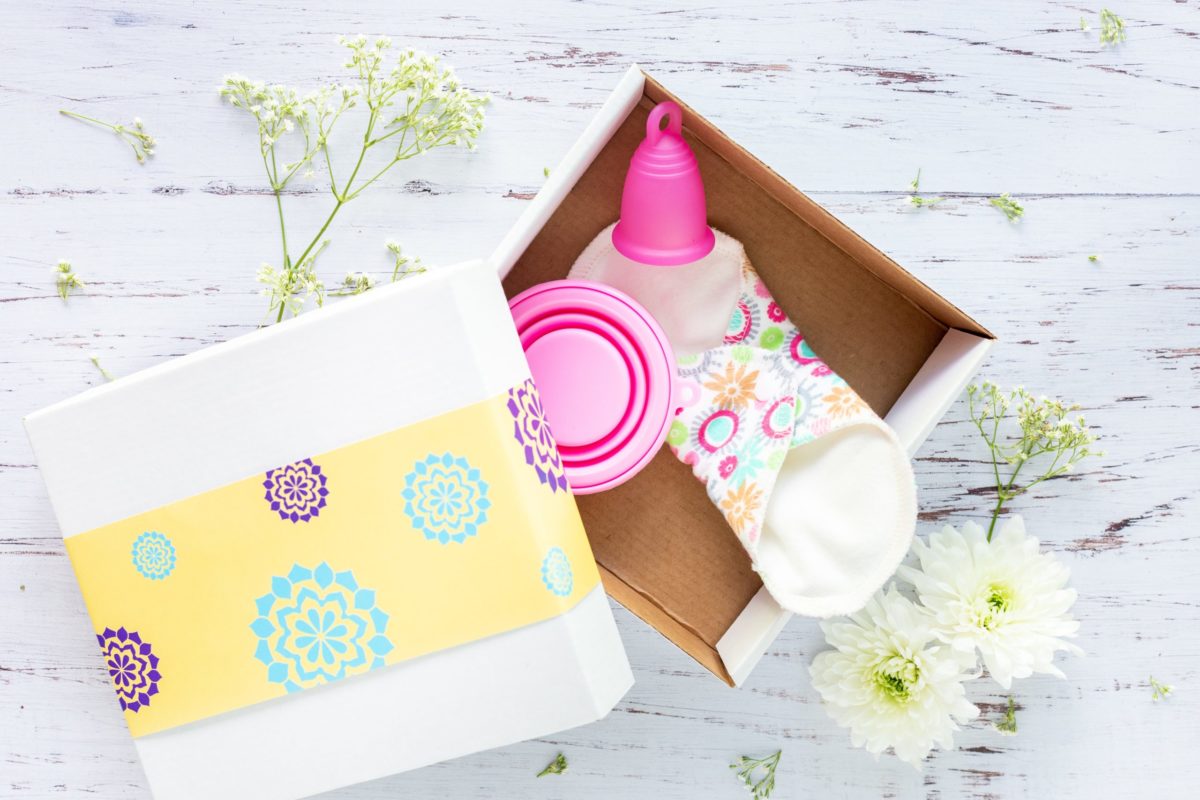Cycling is usually the last thing on our minds when PMS strikes. But sometimes there is no better feeling than getting out on your trusty bicycle and putting some distance between you and the hustle and bustle of the world. Whether you ride as a means of transportation, as a form of exercise, or perhaps you cycle because you absolutely love to, whatever drives your passion for two-wheels, the reality is that riding our bikes can sometimes be the last thing on your mind, especially when you have your period.
It can be challenging to find the motivation to ride when PMS strikes. Feeling bloated, lethargic, irritable with, of course, gnawing pangs of abdominal cramping are just a few of the common symptoms. It’s the only time where you may find yourself turning away from your bicycle to seek temporary comfort elsewhere. However, your school P.E teachers were right, exercising can help alleviate symptoms of PMS, but to understand how that works, you need to understand your menstrual cycle first.
Menstrual cycles can vary in duration from person-to-person, and they can range anywhere from 21 to 45-days, but a typical cycle will last for 28-days and comprise of four phases. There are three main hormones at play throughout, oestrogen, follicle-stimulating hormone (FSH) and progesterone. These hormones work together to prepare your ovaries for releasing an egg to be fertilised during ovulation. As your body transitions between phases, the levels of these hormones will rise and fall, which can affect your mood, appetite and energy levels, to name a few.

THE MENSTRUAL PHASE
If you take your first day of bleeding as the first day of your cycle, then you’re at the start of the menstrual phase, a.k.a your period has arrived. During this phase, you’ll bleed for around five days, losing approximately 60ml throughout the duration. That doesn’t sound like very much, despite how it sometimes feels!
Oestrogen is down through your boots at this point, so it’s pretty low. This causes our bodies to switch from burning fats to burning carbohydrates because our insulin sensitivity is heightened as our bodies seek glycogen. What does this mean for cyclists and those with active lifestyles? During your period, try to boost your intake of slow-release foods such as oats and pasta. Your body will burn these for fuel which will help keep your energy levels up when cycling.
THE FOLLICULAR PHASE
This second phase actually encompasses the menstrual phase and makes up the first half of the menstrual cycle; the follicular phase.
From around day 5 to day 14, once your period has finished and the bleeding has stopped, your oestrogen levels will begin to rise. As your oestrogen level increases, it stimulates the growth of follicle-stimulating hormone (FSH) which is responsible for helping with the development and function of your ovaries.
While oestrogen and FSH are on the rise, so is testosterone. This is why you may notice more significant gains from strength training during the first half of your cycle when compared with the second half.
THE OVULATION PHASE
Around day 14 of your cycle, right in the middle, your ovaries are ready to release an egg for fertilisation. This also marks the end of the follicular phase and the beginning of the luteal phase.
Oestrogen levels are sky-high, and although you may still feel like your riding the rollercoaster of emotions, this is when we become our most active. Your body will revert back to using fats as a primary fuel-source as our metabolic rate rises, making it a perfect time for clocking up the miles and focusing on some endurance training. So take advantage of your hormonal energy boost!
THE LUTEAL PHASE
The latter half of your menstrual cycle can be the most challenging, especially as your body begins to shift back towards the menstrual phase. Oestrogen levels plummet just as the sedating effects of progesterone reach their peak, rendering you to feel a little unenthused, hungry, irritable, and generally lower in mood.
Light recovery workouts are excellent during this time, like yoga or a leisurely bike ride, this means NO intervals training. Enjoy the fresh air, the quiet time and give your mind and body a gentle endorphin boost.
CAN CYCLING HELP ALEVIATE MENSTUAL CRAMPS?
If you suffer from menstrual cramps, then cycling or light exercise may help to relieve the discomfort. Aerobic exercise improves the flow of deoxygenated blood through the venous system. This, in turn, increases prostaglandins and other chemicals, which have been proven to reduce discomfort in the pelvic region.
Doctor and former pro triathlete, Dr Tamsin Lewis, recommends a gentle ride without the pressure to perform is a great way to help combat mild symptoms of PMS. “Eating well and looking after yourself is important. Do not restrict carbohydrate intake at this time [the menstrual phase] as needs are increased, and restriction lowers the level of the happy hormone, serotonin, which can worsen mood and pain perception.”
WHAT SANITARY PRODUCT IS BEST FOR CYCLING?
When it comes to tampons, cups or pads, there is no correct choice, just as one-size most definitely does not fit all. There are a couple of things you should consider when it comes to selecting a sanitary product to use while cycling: first and foremost, it needs to be comfortable. The last thing you want is to have discomfort and bleeding on a bike ride, so ensure that whatever method you choose is suitable for you on the bike, even on the long days out.
If you get along with all types of product, then you’ll need to consider things like your flow and how long you plan to spend in the saddle. For many long-distance cyclists and bike-packers, menstrual cups have become hugely popular. They’re reusable, better for the environment, easy to use and take up no space in your bag or pocket whatsoever.
When trying out a new type of menstrual product for cycling, test them out somewhere locally, just in case you don’t get along with it and need to nip home for a quick change.

Once you begin to understand your menstrual cycle and how it impacts on your cycling, you can start to work with it by adjusting your training to what your body needs. It’s like the new-age Bodyform advert says, “No blood should hold us back”, so don’t let it!
If you’re unsure about sanitary products and you’re looking for more information regarding your menstrual cycle, seek advice from a healthcare professional.
Across three packages, our Bicycle Insurance covers your equipment when riding, racing or training worldwide.